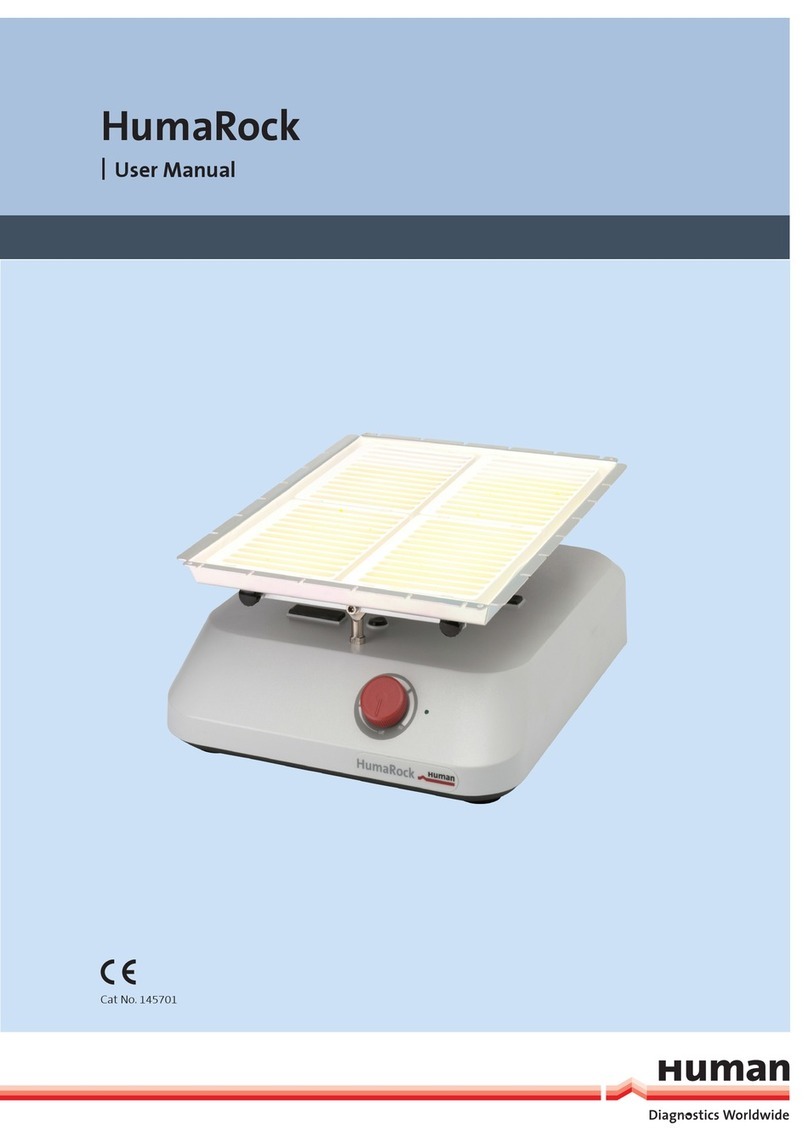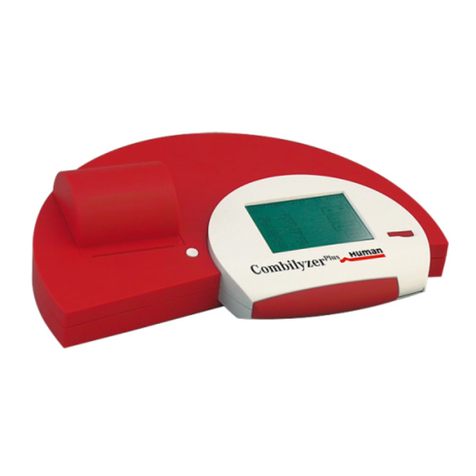
SAfETy INSTruCTIONS 9
1 SAFETY INSTRUCTIONS
1.1 Introduction
This manual is considered part of the instrument and must be
available to the operator and the maintenance personnel. For
accurate installation, use and maintenance, please read the
following instructions carefully. In order to avoid damage to
the instrument or personal injury, carefully read the ”GENER-
AL SAFETY WARNINGS” describing the appropriate operating
procedures. Please contact the technical Service in the event
of instrument failure or other difficulties with the instrument.
1.2 User Warranty
HUMAN warrants that instruments sold by one of its author-
ised representatives shall be free of any defect in material or
workmanship, provided that this warranty shall apply only
to defects which become apparent within one year from the
date of delivery of the new instrument to the purchaser.
The HUMAN representative shall replace or repair any defec-
tive item at no charge, except for transportation expenses to
the point of repair.
This warranty excludes the HUMAN representative from li-
ability to replace any item considered as expendable in the
course of normal usage, e.g.: lamps, valves, syringes, glass-
ware, fuses, diskettes, tubing etc.
The HUMAN representative shall be relieved of any liability
under this warranty if the product is not used in accordance
with the manufacturer‘s instructions, altered in any way not



































